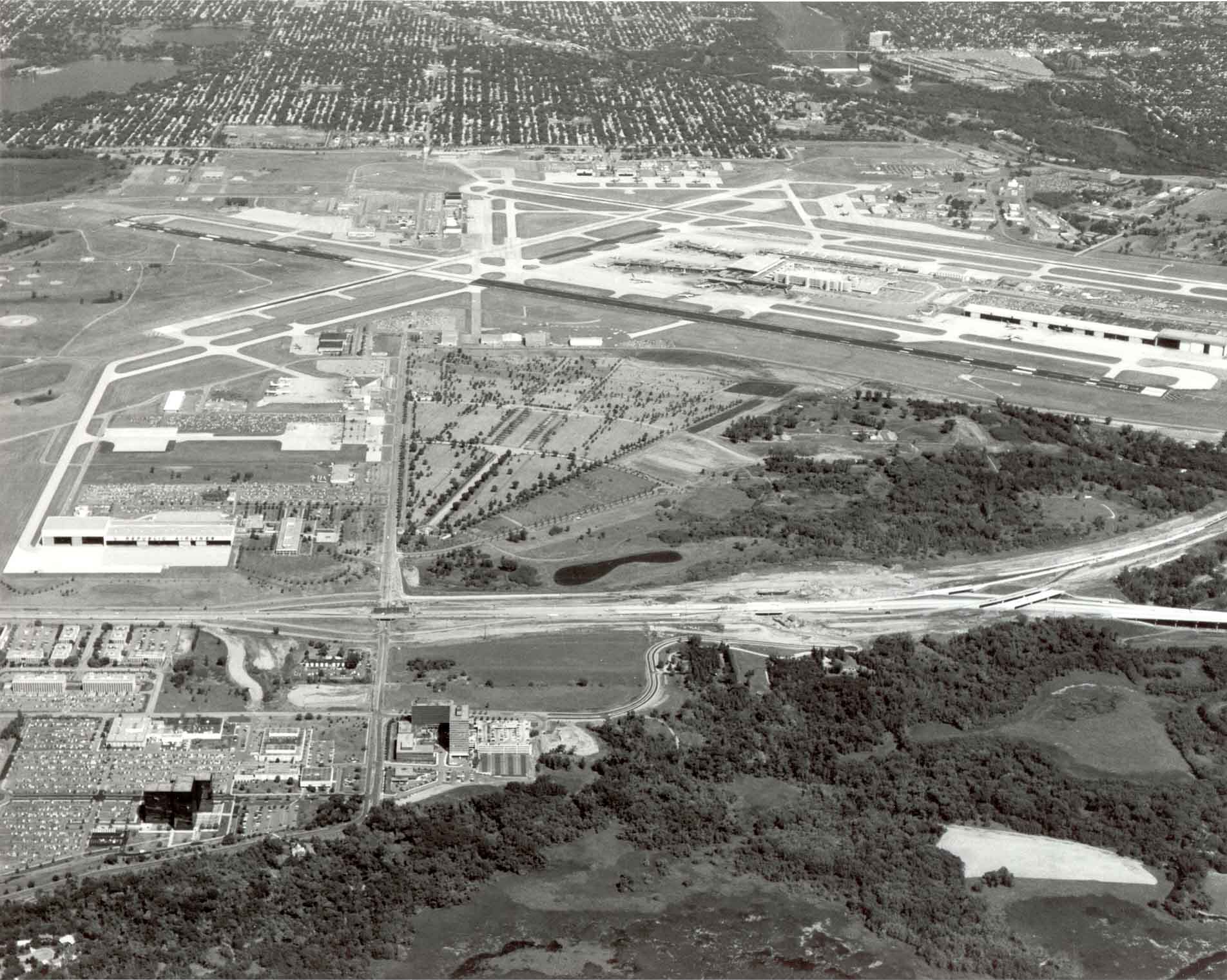
Twin Cities International Airport, 1983, grew from a grass field and small frame hangar on the site of a defunct auto-racing track of the 1920s to be one of the country's major hub airports. The complex occupies the flat peninsular plateau east of the Mississippi (upper right) and north of the Minnesota River (bottom). Historic Fort Snelling stood at the confluence, just east of the present airport. Several square miles of sprawling runways, ramps, terminals, and major airline headquarters made up the air-age version of the rail-era downtown depots, yards, and railroad company offices. The airport succeeded the rail terminals, the riverboat port, and the old fort as the fourth generation of regional transportation nodes. Office-industry-hotel developments (lower left) follow the freeway about seven miles west to the Edina interchange, shown in the following picture. Aerial photo by K. Bordner Consultants, Inc., Minneapolis, MN.